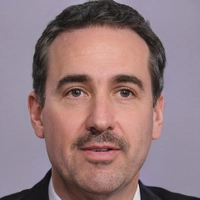Trying to get a prescription without booking a doctor's appointment? You’re not the only one wondering if there’s a shortcut. With packed clinics and long wait times, grabbing your meds online sounds tempting. But can you really snag a prescription without ever talking to a doctor?
Here’s the real deal: just googling a medication and buying it from any site isn’t how the system is supposed to work. In most places, the law says you need a prescription for many meds, especially antibiotics or anything with potential side effects. The days of self-medicating without any checks are pretty much over, no matter how convenient that sounds.
Still, things have changed a ton in the last few years. Online pharmacies and telehealth visits can make the whole process a lot quicker. Instead of sitting across from a doctor in person, you might answer a digital health questionnaire or hop onto a quick video call. If you’re looking for safe, legit options, it helps to know how these services work so you don’t fall for sketchy sites promising “no prescription needed.”
- How Traditional Prescriptions Work
- What Counts as 'Seeing a Doctor'?
- Online Pharmacies: Legit or Not?
- Telehealth Visits and E-Prescribing
- Warning Signs of Fake Pharmacies
- Tips for Getting Medication Safely
How Traditional Prescriptions Work
The usual way to get a prescription hasn’t changed much over the years. You book an appointment, show up at your doctor’s office, and talk about what’s bothering you. The doctor checks your symptoms, maybe runs some tests, and decides if you actually need that medicine. If everything checks out, you get a prescription—usually a piece of paper or sometimes sent straight to your pharmacy.
This step isn’t just busywork. Healthcare laws want to keep things safe, especially if the medication has risks or could be misused. The Centers for Disease Control and Prevention (CDC) puts it bluntly:
“Prescribing medications should always follow a thorough evaluation by a licensed healthcare provider to avoid unnecessary or unsafe drug use.”
Here’s a quick look at what happens in the old-school process:
- You make an appointment with a licensed doctor or nurse practitioner.
- You share your symptoms, medical history, and current medications.
- The provider checks you out, sometimes with physical exams or lab work.
- If they think a medication will help, they write a prescription. Otherwise, they may suggest other treatments.
- You take the prescription to a pharmacy for pick-up.
To give you an idea of just how routine this system is, here’s a look at prescription stats from the U.S.:
| Year | Prescriptions Filled (Billions) |
|---|---|
| 2022 | 6.7 |
| 2023 | 7.1 |
| 2024 | 7.5 |
The online pharmacy scene is different, but you can see why prescription rules are strict. Doctors and pharmacists want to reduce mix-ups and keep meds out of the wrong hands. That in-person step isn’t just red tape—it’s about looking out for you and public health. There’s no skipping the checkup, at least not in the classic sense.
What Counts as 'Seeing a Doctor'?
This might surprise you, but 'seeing a doctor' doesn’t always mean sitting in a waiting room with an old magazine. In 2025, the rules are way more flexible. Most places in the US and other developed countries now accept online, phone, or video appointments as official doctor visits—especially since telemedicine took off during the pandemic. The term for this is telehealth, and it’s totally legal for certain prescriptions when done right.
Here’s a quick breakdown of what counts as seeing a doctor when it comes to getting a prescription:
- In-person visits: The classic way—go to a clinic, talk to the doc face-to-face, get a script.
- Video calls: These are now just as legit for most common health issues. You chat via Zoom or a similar app, and the doctor checks your info in real time.
- Phone calls: Depending on the state or country, some basic issues can be handled over a regular phone call. Not always allowed for controlled substances, though.
- Online questionnaires: Some telehealth sites have you fill out a detailed health survey. A real doctor reviews it before deciding if they can safely write a prescription. This is pretty common for things like birth control or allergy meds.
But there are limits. Laws in the US, UK, Australia, and EU usually say a doctor must review your health info and confirm it’s safe before e-prescribing. For any prescription drug—pain meds or antibiotics especially—there’s no legal shortcut where you just click a button and get meds sent to your door without at least some sort of doctor review.
Here’s an at-a-glance look at what’s legit in the US for most meds in 2025:
| Type of Doctor Visit | Legal for Prescriptions? | Common Uses |
|---|---|---|
| In-person | Yes | All medications, including controlled substances |
| Video call (Telehealth) | Yes | Most routine prescriptions; some restrictions on narcotics |
| Phone call | Yes/No | Some basic meds; rules vary by state |
| Online questionnaire only | Yes/No | Birth control, ED meds, allergy meds; no allowed narcotics |
So, yeah, you don’t have to drag yourself into a clinic for every little thing, but there’s still got to be a real doctor in the loop. If a website promises you prescription drugs with zero doctor involvement, that’s a red flag. Play it smart and stick with online pharmacies or telehealth services that follow the rules—it’s your health on the line.
Online Pharmacies: Legit or Not?
So many websites claim to sell prescription meds, but not all of them play by the rules. Some are totally above board, and others are flat-out risky. The first thing you want to look for is whether an online pharmacy asks for a valid prescription. If they’re selling drugs without checking your prescription or offering to skip the doctor part completely, that’s a huge red flag. In the US, for example, the FDA and NABP (National Association of Boards of Pharmacy) keep an eye on these sites. Their "VIPPS" certification badge means a pharmacy is legit, safe, and follows state laws.
Other countries have similar programs—Canada has the CIPA seal, Australia checks registrations with the Pharmacy Board, and the UK uses the MHRA green cross logo. It’s not just about the badge, though. Safe online pharmacies also have licensed pharmacists you can contact with questions, clear contact info, and proper privacy policies. If the site hides its address or doesn’t say who runs it, that's a sign to steer clear.
Here’s how to spot a trustworthy pharmacy online:
- They require a real prescription, not just an online form or quick checkbox.
- The website has contact info and real pharmacists you can actually reach.
- Look for seals like VIPPS (US), CIPA (Canada), or the MHRA green cross (UK).
- Prices aren’t way lower than normal—if it seems too good to be true, it probably is.
- No spammy ads or awkward language—reputable pharmacies care about their reputation.
Remember, the main goal of a real pharmacy is your safety, not just making a sale. Avoid websites that promise overnight shipping without any questions asked or offer to sell controlled substances freely. Always double-check a site's credentials before handing over your money or private health info.

Telehealth Visits and E-Prescribing
Telehealth’s become a game-changer for anyone who hates sitting in waiting rooms. Instead of heading to a clinic, you just connect with a doctor online—usually through video, chat, or a phone call. It still counts as a medical visit, even if you’re in sweatpants on your couch. This is how most online pharmacy services now work if you need a prescription for a new or existing condition.
Here’s how it usually goes:
- You answer a few questions about your symptoms and medical history on a secure form.
- A real doctor (not a bot) reviews your info. Sometimes you’ll chat with them live, and sometimes it’s just a quick review if it’s something routine like birth control or allergy meds.
- If everything checks out and it’s safe, the doctor creates an electronic prescription (an e-script) and sends it to a licensed pharmacy.
Some meds, like antibiotics for a simple infection or ongoing refills for conditions like high blood pressure, are pretty common with online visits. But doctors can’t and won’t hand out prescriptions for everything. Anything with a serious risk—think controlled substances for pain or ADHD—usually still needs an in-person visit or stricter controls. Rules changed a lot during the pandemic, but as of early 2025, most states require a telehealth consult at minimum for any legit prescription.
E-prescribing is tracked and regulated. Every script the doctor writes through a telehealth platform goes into a secure system, just like in a regular clinic. Pharmacies run checks to make sure the doctor’s legit, and most big online pharmacies only work with certified prescribers anyway. So, you’re not just skipping the line—you’re still in the system, getting your meds safely.
If you’re looking to use telehealth for prescriptions:
- Make sure the site is linked to licensed U.S. (or your country’s) doctors and pharmacists.
- Look for clear details about who’s reviewing your health info—no mystery doctors.
- Don’t trust sites that offer prescription drugs with zero questions asked or promise to ship anything, anywhere.
The whole point: telehealth makes getting a prescription easier, not lawless. You still need a real doctor to review your case—even if it’s from your phone.
Warning Signs of Fake Pharmacies
Scammy online pharmacies love to promise easy refills with no hassles, but that’s where most problems start. Not every site that pops up in your search for an online pharmacy is legit. Some sell fake meds, some steal your info, and some disappear with your cash. Here’s how you can spot the fakery before you get burned.
- No Prescription Needed: If a site says you can get prescription-only meds with zero doctor contact, turn around. In the US, UK, and most places, that’s 100% illegal. Real pharmacies always ask for a doctor’s prescription or at least set up a telehealth consult.
- Strange Prices: If the price looks too good to be true—like $5 for something usually $50—there’s a catch. Counterfeit meds are often sold cheap to grab your attention.
- Weird Web Design: Watch for spelling errors, broken English, missing contact info, and no real address. Real businesses usually don’t hide who they are.
- No Pharmacist Contact: Proper online pharmacies must have a way for you to talk to a licensed pharmacist. If you can’t find that, it’s a red flag.
- Not Licensed or Verified: Legit US sites should end in .pharmacy or be listed with the NABP (National Association of Boards of Pharmacy). In the EU, check the common EU logo. No sign of verification? Walk away.
Look at this quick comparison of legit vs. scammy pharmacies:
| Feature | Legit Pharmacy | Fake/Scam Pharmacy |
|---|---|---|
| Prescription Required? | Always | Never |
| Price Info | Typical market range | Too cheap or unclear pricing |
| License Listed | Yes, easy to find | Nowhere to be seen |
| Pharmacist Contact | Available | Not available |
| Contact Details | Physical address, clear info | Usually missing or fake |
Still not sure? The FDA found that 96% of online pharmacies don’t follow safety laws. Always double-check before entering your credit card or personal info. Stick with sites you can verify with trusted groups like NABP, and don’t let low prices or big promises cloud your judgment. If you’re ever in doubt, talk to your doctor or a licensed pharmacist—they’ve seen every scam in the book.
Tips for Getting Medication Safely
Everyone wants convenience, but when it comes to your health, shortcuts can backfire. There are a few key things you can do to get your scripts online without risking your safety or wallet.
- online pharmacy check: Only use licensed sites. If you're in the U.S., check for the VIPPS seal—this means the pharmacy is verified by the National Association of Boards of Pharmacy. In the UK, look for the green internet pharmacy logo from the MHRA.
- Don’t trust sites that ship prescription meds without even a basic questionnaire or telehealth consult. It’s not just shady—it’s illegal in most places.
- Stick to pharmacies that ask for your prescription; some offer telehealth so you can get one legally if needed. They usually want your medical history, too.
- Be skeptical of “miracle deals” on hot meds like antibiotics, painkillers, or ADHD treatments. If the price looks too good to be true, it usually is.
- Watch where the site is based. Many sketchy websites hide behind vague contact details or fake addresses. If you can’t find a legit phone number or customer support, back out.
Real pharmacies care about safety. They’ll give clear instructions for taking your meds, tell you about side effects, and offer ways to check in if you have problems. Here’s a table laying out the classic signs of a legit vs. sketchy pharmacy:
| Safe Online Pharmacy | Unsafe Online Pharmacy |
|---|---|
| Requires a valid prescription | Sells meds with “no prescription needed” |
| Verified by national boards (VIPPS, MHRA, etc.) | No signs of verification |
| Clearly lists company contact info | No contact details or just an email |
| Offers pharmacist support | No one to talk to about meds |
| Explains side effects, usage, and refills | Sends meds with no instructions |
If you’re unsure, run the pharmacy’s URL through the NABP’s Safe Pharmacy tool or the MHRA’s checker. And always keep an eye out for sudden price changes, pressure to buy in bulk, or pushy ads—it’s a red flag every time. If you follow these steps, you’ll dodge most of the online pharmacy pitfalls and keep your health in your own hands.






